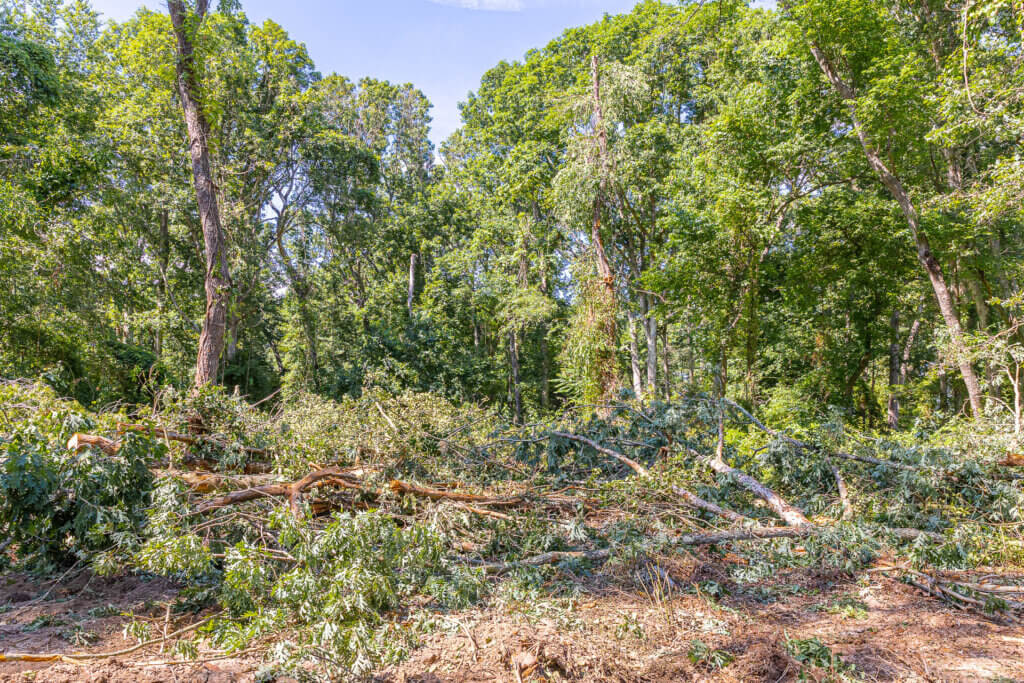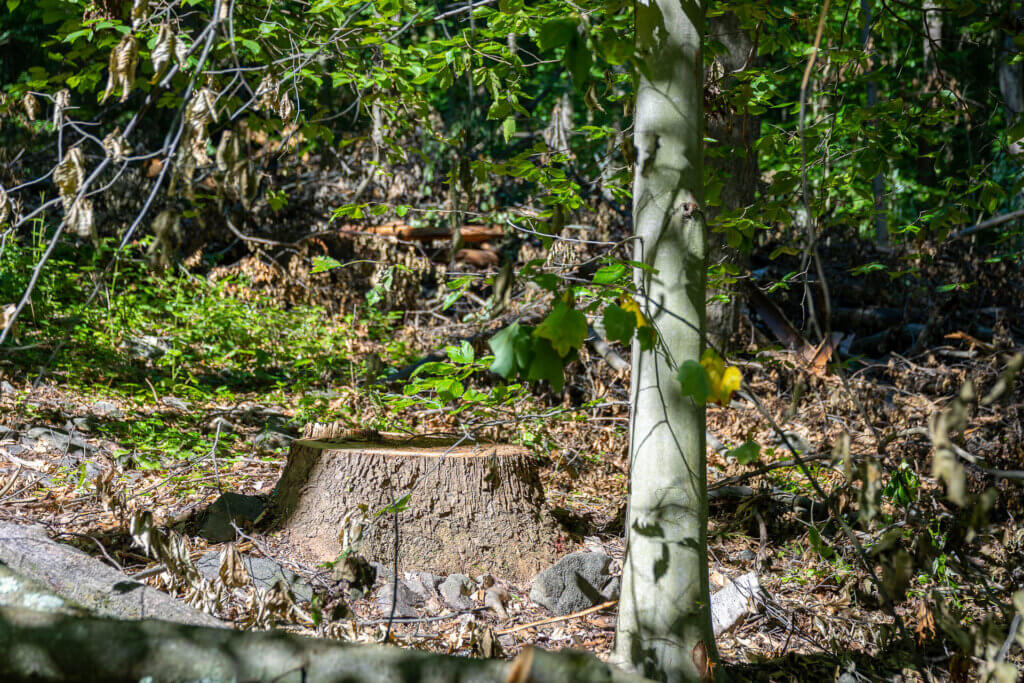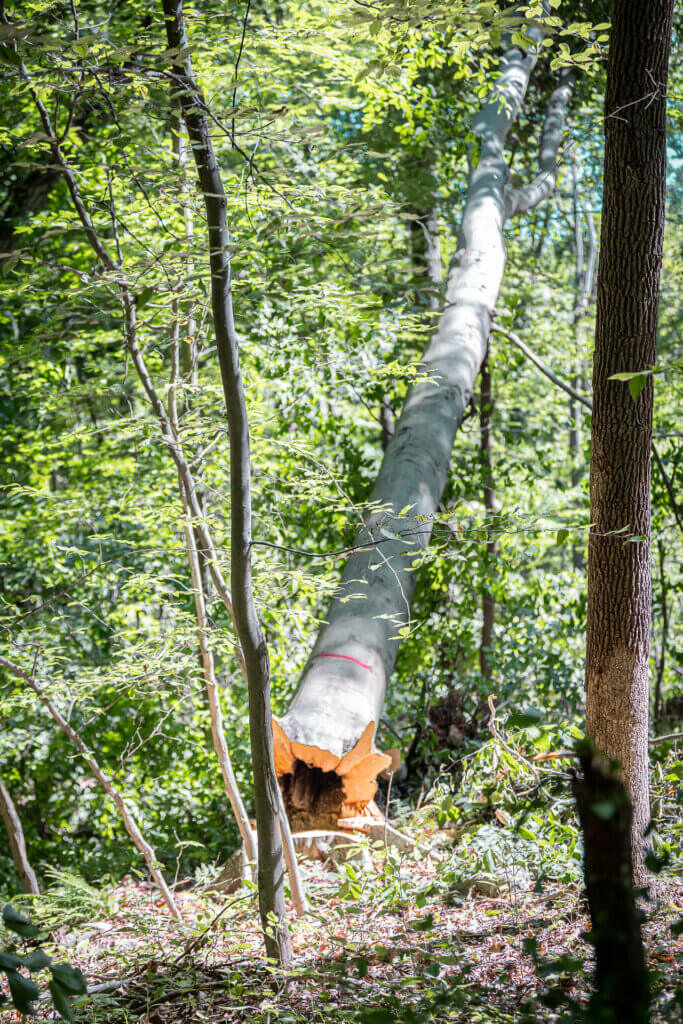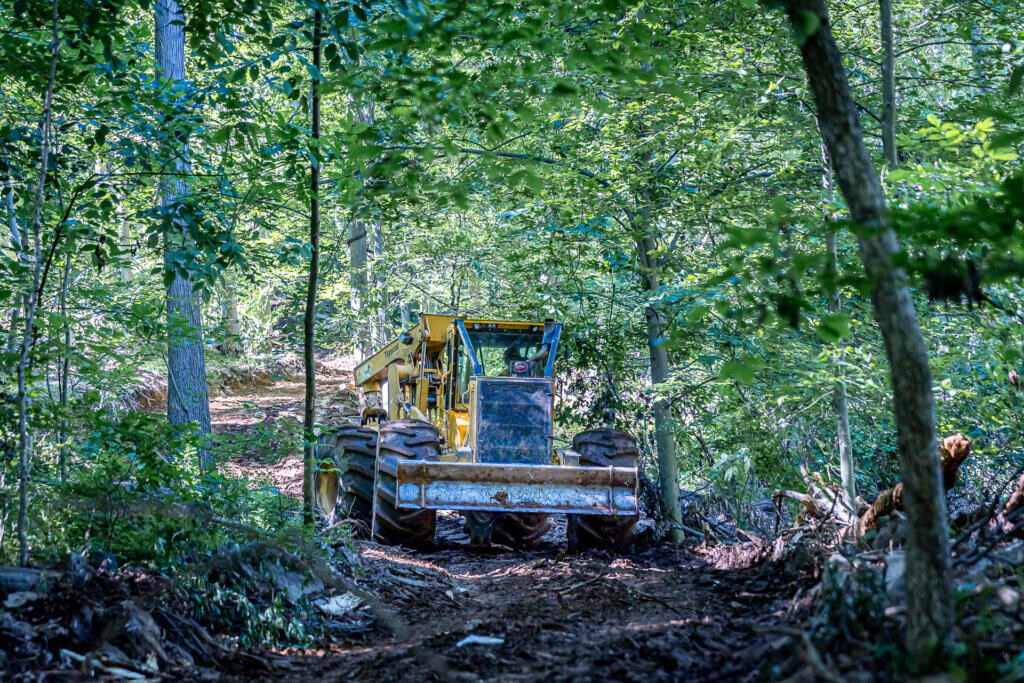Our last blog post described the process of a Stoltzfus timber harvest. In that post, we talked briefly about what you can expect after we’ve harvested your trees. In this post, we want to cover that topic in more detail. Although we try to explain these things before each harvest, customers are often still surprised at how things look once a logging operation is complete.
Big-picture perspective
We like to tell people that trees are crops—like corn and beans. Of course, the biggest difference in these crops (other than size!) is the time between harvests. Field crops are planted and harvested every year, but it can take a decade or more after a timber harvest before another harvest.
Remember—your woods will look different after a harvest. However, by carefully choosing which trees we cut and leave (and harvesting carefully), we set you up for future success. You might think of a timber harvest as the beginning of a construction project. Just like with a construction site, following a harvest you’ll see some debris, and you’ll be able to tell we were there, but you’ll also know that in our work we were building for the future.

Tree tops
You’ve been used to seeing tree tops when they were 60 or 80 feet in the air. But nearly everyone is amazed when they see those tops lying on the ground. Once you get close to them, you realize how big and spreading they are.
Within the logging industry, these tops are left where they fall, and that is our practice as well. However, if some of them are near your lawn, we may push them back into the woods a bit. Since most people don’t want to see these branches when they look into their woods, we cut them up so they do not stand higher than 6’.
Sometimes, people ask why we don’t haul away the tops of the trees. There are a couple of reasons for this. First, it is very expensive to haul them away or chip them up, and that cost would significantly reduce what we could pay for your trees.
But economics aside, leaving the tops brings several benefits to your woods. Here are just three ways that leaving the tree branches brings value:
- They protect young tree seedlings from being eaten by deer until the seedlings are large enough to survive a deer feeding.
- They provide cover for animals.
- As they decompose, the tops become a source of nutrients and organic matter in the forest soil. This enriched soil helps the remaining trees to flourish.
These tops won’t disappear overnight, but after a few years, they will be less obvious as they rot away and get smaller (and as nearby plants grow taller).
Stumps
Every tree we harvest leaves behind a stump. Though we cut these stumps fairly close to the ground, you will still see them when you look through your woods. But remember that trees are a crop. For some species, the stumps that we leave will begin to grow again, producing more trees for future harvests. And because these stump-sprouted trees are drawing from an established root system, they will actually grow to harvestable size faster than those grown from seed.

Damage to remaining trees
Trees are so large and grow so close to each other that it’s impossible to avoid damaging adjacent trees when we cut one down. But we believe that the trees we leave behind are part of a future crop, so we do all we can to minimize damage to them.
There are two ways that adjacent trees are damaged during a logging operation—by being struck by falling trees and by being rubbed by logs as they are skidded to the landing site.
Broken and cracked branches
When we are felling trees, we can minimize damage to surrounding trees by being thoughtful about which direction we make them fall and using skill to direct them as accurately as possible into a clear area. Even so, as the crown of a falling tree swipes the crown of a standing tree, some branches will break. Some will fall to the ground, but others will crack and be left hanging. Since we are loggers and not arborists, our crews do not climb into the trees to remove cracked branches.

Scuffed bark
Sometimes, as we are skidding logs out of the woods, they will rub against standing trees and knock off a portion of bark. (This can also happen when a falling tree trunk hits a standing tree.) In most cases, these bark injuries are not significant enough to cause economic harm to the standing tree. While trees do not technically heal, they do compartmentalize or “wall off” an injury to limit the spread of any decay.
We can limit the frequency and extent of these bark injuries by choosing good routes for our skid trails. However, if any of the injuries cause irreparable injury to a non-target tree, we will pay you twice the market value for that tree.
Ruts
Before we start the harvest, we will determine where we will drive on your property and where we will create skidding roads. So you shouldn’t fear that we will crisscross your property with heavy equipment.
Our skidders weigh about 20 tons–without the weight of the logs they are dragging. Even with their large “balloon” tires to spread the weight, it’s obvious that these machines will leave ruts in the ground. For hauling logs to our mill, we use tractor-trailers or tri-axle log trucks; these heavy vehicles will also leave their marks.
Once we have completed the work, we will only call the project complete once we have addressed these ruts. Our contract states that we will fill any ruts over 9” deep, so we will typically use a bulldozer to regrade an area that has been significantly disturbed. When that is complete, we will cover any bare soil we’ve created by seeding it with ryegrass and clover.

Regrowth and next harvest
One of our primary goals is to help property owners manage their woods for long-term health. During our initial consultation, we will give you the recommendations that we believe are best for your property (while keeping your goals in mind).
Because we have these thoughts in mind from the beginning, we will leave your woods in a condition that should give you another timber harvest in 10-15 years. We will leave behind some of the good trees and some of the trees that are well suited to being seed trees for tomorrow’s timber.
Conclusion
There’s a saying that you can’t make an omelet without breaking some eggs. If that’s true for eggs, it’s even more true for trees. Cutting and moving these massive objects will make some marks. Rest assured that we take every precaution to avoid serious damage to your soil and surrounding trees, and we promise to fix as many of these issues as possible before we leave your property for the last time.
Are you ready to learn more about harvesting your timber? Call us today!